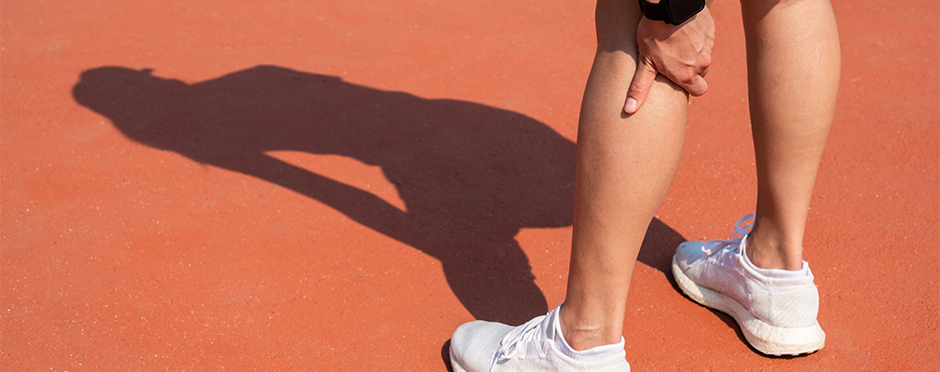
Hamstring Injuries & Running
Comments Off on Hamstring Injuries & RunningHamstring injuries can be one of the most common injuries in sports and can be related to running. Despite being one of the most common injuries, the mechanism (the cause) of the injury is still very poorly understood and requires more research. So, what do we know currently about hamstring injuries and their relationship to running? Here’s what every runner should know about hamstring injuries as an endurance athlete and what to do if you experience one for yourself.
1. How Do I Know If I Injured My Hamstring?
Hamstring injuries are typically diagnosed by a medical professional. A medical professional will use their subjective interview with the patient, an objective examination, and possibly imaging to determine the severity of the hamstring injury. Hamstring injuries are graded on a scale from 1 to 3. The list below provides how each grade is classified1:
Grade 1: mild muscle pull/strain
Grade 2: partial tearing of the muscle
Grade 3: complete tearing of the muscle
The typical signs and symptoms of a hamstring injuries may include, but are not limited to:
- Sudden, sharp pain in the back of the upper leg
- Feeling or hearing a pop
- Swelling
- Tenderness
- Bruising
- Pain with walking
- Tenderness to touch
- Weakness
- Difficulty weight bearing
2. What Is The Cause Of A Hamstring Injury? Can I Prevent It?
As stated above, the cause of hamstring injuries still remains unknown at this time. It has been found there are some precipitating factors that should be considered. The causes that have been found include poor warm up, muscle fatigue with activity, muscular imbalance, and a limitation of hip internal rotation3.
While we cannot say with absolute certainty, physical therapy may help to prevent hamstring injuries from happening. Improving hip mobility and strength, as well as functional mobility of the hamstring may prevent hamstring injuries3. Another important piece of prevention is education. Educating people on the importance of a good warm up and cool down, proper rest periods, and hydration and nutrition can play a critical role in preventing a hamstring injury.
3. When Should I Seek Care From A Medical Professional?
A hamstring injury is not commonly considered an emergency condition. Following a hamstring injury, if you have significant bruising, seek advice from an orthopedic specialist. They will perform an evaluation and determine if imaging is necessary. If there is no significant bruising, utilizing compression, ice, and rest for a few days may be appropriate. Feel free to reach out to an Athletico physical therapist to determine the potential severity and need for further medical attention after the acute injury, but for sure if your pain is not better in two weeks.
Meet With An Athletico Endurance Or Hip Preservation Expert
Preventing injury with proper technique and different training methods is an effective and efficient way to improve physical fitness and prevent injuries for runners. Building an all-inclusive program is the key to success for runners. Seek professional advice from one of Athletico’s endurance and hip preservation team members regarding your current running program.
Athletico offers free assessments to keep you feeling your best. If you notice abnormal soreness, aches, or pains in your hamstring, contact Athletico. Our team will assess your pain and provide recommendations for the best treatment option. Free assessments are available in person and virtually through our telehealth platform.
*Per federal guidelines, beneficiaries of plans such as Medicare, Medicaid, Tricare, VHA and other federally funded plans are not eligible for free assessments.
The Athletico blog is an educational resource written by Athletico employees. Athletico bloggers are licensed professionals who abide by the code of ethics outlined by their respective professional associations. The content published in blog posts represents the opinion of the individual author based on their expertise and experience. The content provided in this blog is for informational purposes only, does not constitute medical advice and should not be relied on for making personal health decisions.
References:
1. Hamstring Injury: Treatment, Prevention & Recovery (clevelandclinic.org)
2. Hamstring injury – Symptoms and causes – Mayo Clinic
3. Li, X., Ma, R., Zhou, H., Thompson, M., Dawson, C., Nguyen, J., & Coleman, S. (2015). Evaluation of hip internal and external rotation range of motion as an injury risk factor for hip, abdominal and groin injuries in professional baseball players. Orthopedic Review, 7(4). https://doi.org/10.4081/or.2015.6142

Comments are closed